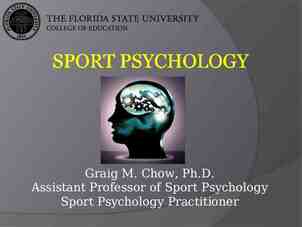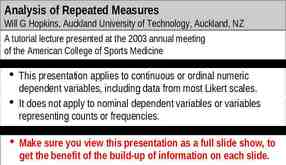WILLIAM GENOCHIO, VBA COORDINATOR DSO, CLEVELAND VA REGIONAL OFFICE
38 Slides637.90 KB

WILLIAM GENOCHIO, VBA COORDINATOR DSO, CLEVELAND VA REGIONAL OFFICE COURT CASES TO KNOW

COURT CASE IMPORTANT TO VETERANS The intent of the following slides is to provide basic knowledge of recent and past Court cases that benefit veterans. We do not expect you to memorize these but want you all aware of what decisions the Court of Appeals Veteran Court (CAVC) has to offer veterans. These Cases are mainly used at the Board of Veterans Appeals but can be used at the Supplemental / Higher Level Review. The effect of the argument my not carry as much wait at the RO. As the RO is bound by the 38 C.F.R. whereas the BVA is not completely

MILLER V WILKIE

MILLER V. WILKIE VET. APP. NO. 18-2796 The bottom line: The Court of Appeals for Veterans Claims (Court) opinion in Miller holds that a VA Compensation and Pension examination (C&P exam) is not adequate if it does not address the Veteran’s relevant lay statements. This is helpful to Veterans because it reaffirms the duty of a C&P examiner to review the entire claims file and analyze the full picture of the Veteran’s condition as part of the C&P exam process. What happened in Miller: While his claims were being processed, Mr. Miller submitted several lay statements describing the history of his symptoms for these conditions. However, the VA C&P exams used to deny his claims ignored the Veteran’s lay statements. Why Miller is important: Miller is important because it reaffirms that a medical opinion is not adequate if it does not explicitly address all relevant facts including any lay statements submitted by the Veteran describing his symptom history. https://law.justia.com/cases/federal/appellate-courts/cavc/18-2796/18-2796-2020-01-16.html https://ame333-

MILLER V. WILKIE VET. APP. NO. 18-2796 Suggested argument based upon Miller: The beneficial nature of Miller comes into play only if the Veteran already submitted a lay statement describing one or more medical conditions. Lay statements are relevant to both service connection and increased rating claims. Generally, any initial claim, supplemental claim, or claim for an increased rating should be accompanied by VA Form 21-4138, Statement in Support of Claim (with additional pages if needed), describing the onset / worsening, frequency, duration, and severity of symptoms for each of the Veteran’s claimed conditions. The medical opinion in this case was inadequate because it failed to explicitly consider the Veteran’s full symptom history, which was provided in a statement submitted on [date]. In that statement, the Veteran explicitly described [summarize symptom history]. Because these facts were not explicitly analyzed, the C&P examination is inadequate, and a new C&P examination must be provided. See Miller v. Wilkie, Vet.App. , No. 18-2796 (Jan. 16, 2020).

SMITH V WILKIE

SMITH V. WILKIE, VET. APP. , NO. 181189 The bottom line: The Court of Appeals for Veterans Claims (Court) opinion in Smith holds that a VA examiner’s medical opinion must address a Veteran’s lay statement about the continuity of symptoms following an inservice event or injury. The Smith opinion is helpful to Veterans. Why Smith is important: The Court’s opinion helps Veterans because it addresses two common situations. First, carefully review previous Board remands because the Board may have stated that the Veteran’s statements about an in-service injury and continuity of symptoms were credible. However, in a subsequent decision, the Board may say the Veteran is not credible. After the Smith decision, the Board should now provide Veterans with notice that the Board reversed its finding of credibility, and VA must then provide the Veteran with an opportunity to respond to VA’s change.

SMITH V. WILKIE, VET. APP. , NO. 181189 If a Board remand provided language supporting the Veteran’s credibility, then use Smith to proactively protect the Veteran in case the Board is inclined to change its mind. File a Decision Review Request: Board Appeal, VA Form 10182, with the following language: The Board previously indicated the Veteran’s lay statements about an in-service injury and a continuity of symptoms following service were credible. [Cite to the previous Board decision and repeat what the Board said about the lay statements.] If the Board intends to reverse this finding, then the Veteran must be provided with notice of this reversal and the opportunity to submit additional argument or evidence on this issue. See Smith v. Wilkie, Vet.App. , No. 18-1189 (Apr. 27, 2020) (stating that “fair process requires notice and an opportunity to respond when the Board purports to reverse its prior characterization that evidence is credible or otherwise satisfactory to establish a fact necessary to establish entitlement to VA compensation benefits”).

SMITH V. WILKIE, VET. APP. , NO. 181189 If a VA examiner failed to address and consider the Veteran’s lay statements in the final opinion, then use Smith to argue for new VA examination. File a Higher-Level Review, VA Form 20-0996. Include a Statement in Support of Claim, VA Form 21-4138 with this language: The Veteran previously provided VA with lay statements regarding an in-service injury and a continuity of symptoms since the in-service injury. The [date] VA examination did not explicitly address the lay statements in its opinion. Therefore, VA’s opinion is not adequate, and a new examination is needed to address the Veteran’s statements. See Smith v. Wilkie, Vet.App. , No. 18-1189 (Apr. 27, 2020) (stating “the duty to assist may require a medical examination that addresses whether the veteran’s condition is consistent with his claimed [in-service] injury”). Note: if a Veteran submits a Higher-Level Review and VA denies it, then consider filing a Decision Review Request: Board Appeal, VA Form 10182, with the same language. This strategy is recommended because the Board may be more current with the application of precedent-setting Court opinions.

DELRIO V WILKIE

DELRIO V. WILKIE VET. APP. NO. 17-4220 The Court of Appeals for Veterans Claims (Court) opinion in Delrio holds that the ultimate issue of whether a Veteran is employable is not a medical determination and that it cannot be presumed that a Compensation and Pension (C&P) examiner considered the Veteran’s ability to perform work tasks unless that is explicitly described in the C&P exam opinion. The issue of employability (or not) rests with the VA rater deciding the claim. This Court opinion is helpful for Veterans seeking Total Disability Based on Individual Unemployability (TDIU) because VA raters often misuse medical opinions to deny TDIU benefits to Veterans. https://law.justia.com/cases/federal/appellate-courts/cavc/17-4220/17-4220-2019-12-19.ht ml https://ame333-

DELRIO V. WILKIE VET. APP. NO. 17-4220 Why Delrio is important: This is an important Court opinion because VA typically orders and relies upon C&P examinations to decide TDIU even though employability is not a medical question. It is entirely proper for VA to obtain an examination to determine what tasks a Veteran is capable of performing. An examiner can determine a Veteran’s ability to do things like stand, sit, lift, type, or concentrate. However, whether these limitations result in unemployability is an individual determination that must consider the Veteran’s background including education and work history. Delrio is a good reminder that a Veteran’s employability is a determination that is exclusively the responsibility of the VA rater and that the rater must consider all relevant evidence.

RAY V WILKIE

RAY V. WILKIE VET, APP. NO. 17-781 The bottom line: in Ray holds that the phrase "unable to secure and follow a substantially gainful occupation" in the Individual Unemployability (IU) regulation has two components: one economic and one noneconomic.” The Court of Appeals for Veterans Claims (Court) defined specific factors that are relevant in considering whether to grant IU. What happened in Ray: The specific facts of this case are not important. What matters is how the Court announced a new legal standard for adjudicating IU and then remanded the matter to the Board of Veterans’ Appeals (Board) to apply that standard when VA again decides the case. Why Ray is important: Ray is important because it sets forth a more detailed framework for determining whether IU should be awarded. The Court explicitly states that it is defining IU because VA has not.

RAY V. WILKIE VET, APP. NO. 17-781 In determining whether a Veteran can secure and follow a substantially gainful occupation, attention must be given to the Veteran's history, education, skill, and training; whether the Veteran has the physical ability (both exertional and nonexertional) to perform the type of activities (e.g., sedentary, light, medium, heavy, or very heavy) required by the occupation at issue. Factors that may be relevant include, but are not limited to, the Veteran's limitations, if any, concerning lifting, bending, sitting, standing, walking, climbing, grasping, typing, and reaching, as well as auditory and visual limitations; and whether the Veteran has the mental ability to perform the activities required by the occupation at issue. Factors that may be relevant include, but are not limited to, the Veteran's limitations, if any, concerning memory, concentration, ability to adapt to change, handle workplace stress, get along with coworkers, and demonstrate reliability and productivity.

RAY V. WILKIE VET, APP. NO. 17-781 Also consider if the veteran is working is it a protected environment. This can help prove that if not for the protected environment the veteran would be unable to work. Examples of protected environment: Works for family or friend that allows veteran to come and go as needed Company that accommodated the veteran's issues Reduced work shift, more breaks allowed to leave when needed

STEWART V WILKIE

STEWART V. WILKIE VET. APP. NO. 17-4458 The bottom line: The opinion in Stewart holds that an illness is a medically unexplained chronic multisymptom illness (MUCMI) when either the etiology or the pathophysiology of the illness is inconclusive. Stewart also holds that a determination on whether an illness is an MUCMI must be based on a Veteran’s individual circumstances and will generally require a medical opinion What happened in Stewart: By way of background, a Gulf War Veteran can be presumptively granted service connection for an “undiagnosed illness” or a “medically unexplained chronic multisymptom illness(MUCMI).” Sections3.317(a)(2)(ii)and 3.317(b) attempt to define “MUCMI,” but the exact meaning of this term has always been ambiguous.

STEWART V. WILKIE VET. APP. NO. 17-4458 Suggested argument based upon Stewart: This case is useful if a Veteran is seeking presumptive service connection for a MUCMI. If a VA decision fails to address both the etiology and the pathophysiology of the illness, then use Stewart to request a new decision: An illness may be a medically unexplained chronic multi symptom illness if either the etiology or the pathophysiology are inconclusive. See Stewart v. Wilkie, Vet. App. , No. 154458(Dec.20, 2018). Your decision did not consider whether the pathophysiology of the Veteran’s illness is inconclusive, and anew decision is required. You may also use Stewart to argue that VA must provide an examination: Your office failed to provide the Veteran an examination to determine if s/he suffers from a MUCMI. Each decision must be particular to the claimant in each case, and this requires a VA medical examination address the Veteran’s individual circumstances. See Stewart v. Wilkie, Vet. App. , No. 15-4458(Dec.20, 2018). https://law.justia.com/cases/federal/appellate-courts/cavc/15-4458/15-4458-2018-12-20-0.html

SIMON V WILKIE

SIMON V. WILKIE VET. APP. NO. 17-1361 The opinion in Simon holds that a rating is protected from reduction under 38 C.F.R § 3.344 only when it has been at the exact same level for at least five years. This is helpful for veterans that receive a Proposal to Reduce hearing for an already service-connected disability. If the. veteran has held this rating for 5 years and the VA propose to reduce by the VA has not obtained a VA medical opinion showing substantiated improvement. An additional exam will be scheduled for 12, 18, 24 months in the future. conditions likely to improve i.e. mental health and musculoskeletal. May not apply under this §

MCCRAY V WILKIE

MCCRAY V. WILKIE VET. APP. NO. 171875: The bottom line: The Court of Appeals for Veterans Claims (Court) opinion in McCray holds that VA must address medical research evidence submitted by a Veteran to rebut a negative VA medical opinion. Why McCray is important: This case is important for two reasons. First, for rebutting hearing loss denials. And, second, for rebutting negative VA C&P opinions for other conditions. The Court did not hold that delayed onset hearing loss happens. The Court made it harder for VA C&P examiners to deny that it occurs. When a VA C&P examiner or rating decision cites the IOM report, DSOs should submit the three pages of the IOM report that showing no studies exist on humans. The three IOM pages are attached. Burden of Proof lies on the veteran or the advocate to research relevant medical studies to support the sought benefit.

MCCRAY V. WILKIE VET. APP. NO. 171875: The opinion is helpful to Veterans because it restates the law that “a medical principle need not reach scientific consensus to adequately support a grant of benefits.” Instead, VA uses a lower standard of evidence: The benefit of the doubt. ”at least as likely as not related to service” Scientists are trained to seek a high level of certainty, well above 50/50. This means that VA should grant claims because the benefit of the doubt means “as likely as not,” or only 50/50. McCray can be use in many different situation for veterans not just hearing loss.

WARD V WILKIE

WARD V. WILKIE VET. APP. NO. 16-2157 AND 17-1204: The bottom line: The Court of Appeals for Veterans Claims (Court) opinion in Ward holds that the there is no requirement that worsening be permanent to establish service connection based on secondary aggravation. As a result of the Court opinion, secondary service connection based on aggravation can be granted even if the primary service-connected condition causes only intermittent flare-ups of the nonservice-connected condition. Why Ward is important: This case is important because it recognizes how intermittent flareups of a condition can be sufficient to establish secondary service connection based on aggravation. Suggested argument based upon Ward: The Veteran’s temporary flare-ups of [describe symptoms] can be enough to establish secondary service connection based on aggravation; a permanent worsening of the condition is not required. Ward v. Wilkie, Vet. App. Nos 16-2157 and 17-1204 (Jun. 14, 2019).

WALSH V WIKLIE

WALSH V. WILKIE VET. APP. , NO. 18495 The bottom line: The Court of Appeals for Veterans Claims (Court) opinion in Walsh holds that one of intermediate steps in the chain of secondary service connection may be aggravation of the Veteran’s obesity, not just the causation of obesity. The Walsh opinion case is helpful to Veterans because they often seek service connection for conditions that are secondary to obesity. As a general rule, under existing VA guidelines set by VA’s Office of the General Counsel, VA will not grant service connection for obesity by itself. However, with the Walsh opinion, obesity may be used as an “intermediate step,” or link in the causal chain, to establish that another condition is service-connected.

WALSH V. WILKIE VET. APP. , NO. 18495 Why Walsh is important: This is an important opinion for Veterans because it can help establish service-connection in a commonly seen fact pattern. While determining the initial cause of obesity may be difficult, determining what worsened the condition is often easier. This is easier because a service-connected disability limits the movement of a Veteran. Walsh establishes that a worsening of obesity can be the “intermediate step” to establish service connection for an additional disability, such as a Veteran’s hypertension or sleep apnea.

WALSH V. WILKIE VET. APP. , NO. 18495 In the first suggested argument, the advocate is arguing for a grant of service connection for the Veteran secondary to obesity: The Veteran should be granted secondary service connection for [new disability] because this disability was caused by an aggravation of his/her obesity due to his/her service-connected [existing service-connected disability]. Walsh v. Wilkie, Vet.App. , , slip op. at 6, No. 18-495 (Feb. 24, 2020) (“[T]here is no permissible basis in the relevant regulation for concluding that obesity may be an ‘intermediate step’ in a secondary-service-connection analysis when service-connected disability causes it, but not when serviceconnected disability aggravates it.” (emphasis in original)).

WALSH V. WILKIE VET. APP. , NO. 18495 In the second suggested argument, the advocate is arguing in an appeal that VA’s C&P exam and nexus opinion are inadequate because the examiner did not consider secondary service connection for the Veteran based on aggravation due to obesity: The medical opinion providing a negative nexus opinion that the Veteran’s [new disability] is not secondary to his/her service-connected [existing service-connected disability] is inadequate because the examiner focused only on whether the [existing service-connected disability] caused the Veteran’s obesity, and did not address whether the disability aggravated his/her obesity. Walsh v. Wilkie, Vet.App. , , slip op. at 6, No. 18-495 (Feb. 24, 2020) (“[T]here is no permissible basis in the relevant regulation for concluding that obesity may be an ‘intermediate step’ in a secondary-service-connection analysis when serviceconnected disability causes it, but not when service-connected disability aggravates it.” (emphasis in original)).

SAUNDERS V WILKIE

SAUNDERS V WILKIE, 886 F.3D (APR 3, 2018) HELD: “‘[D]ISABILITY’ IN [38 U.S.C.] § 1110 REFERS TO THE FUNCTIONAL IMPAIRMENT OF EARNING CAPACITY, NOT THE UNDERLYING CAUSE OF SAID DISABILITY” – AND “PAIN IS AN IMPAIRMENT BECAUSE IT DIMINISHES THE BODY’S ABILITY TO FUNCTION, AND THAT PAIN NEED NOT BE DIAGNOSED AS CONNECTED TO A CURRENT UNDERLYING CONDITION TO FUNCTION AS AN IMPAIRMENT.” BASICALLY PAIN ALONE CAN BE A DISABILITY UNDER THE VA'S DEFINITION OF A DISABILITY. EVEN IF THE VETERAN DOES NOT HAVE A SPECIFC DX.

SAUNDERS V WILKIE SPIN OFF WEBB V WILKIE DOCKET NO 18-0996 (3,26,2020) HELD: BECAUSE THE COURT FOUND THAT THIS CASE “PRESENTS FACTUAL DISPUTES THAT SHOULD BE RESOLVED BY THE BOARD IN THE FIRST INSTANCE,” WHICH MAY ULTIMATELY MOOT THE PANEL QUESTION, THE COURT DECLINED TO ADDRESS WHETHER A VETERAN CAN ESTABLISH ENTITLEMENT TO DISABILITY BENEFITS FOR SYMPTOMS OF A MENTAL HEALTH CONDITION IN THE ABSENCE OF A CONFIRMED DIGNOSIS THAT CONFORMS WITH THE DSM. At the Court, Mr. Webb argued that the Board “erred by failing to consider whether his lay statements are evidence of a psychiatric disability other than PTSD.” He asserted that his “symptoms caused functional impairment and constitute a ‘current disability’ for purposes of establishing entitlement to disability compensation,” citing Saunders v. Wilkie, 886 F.23d 1356 (Fed. Cir. 2018).

OTHER USEFUL COURT CASES

USEFUL CASES FOR HEARING LOSS AND TINNITUS Fountain v. McDonald, 13-0540 (2015), tinnitus is a chronic and organic disease of the nervous system, and the veteran may establish nexus with lay evidence with proof of continuity of symptomatology Charles v. Principi, 16 vet.App.370, 374 (2002), which notes that ringing in the ears is capable of lay observation. Potential Argument: The examination is inadequate because the examiner failed to consider a theory of delayed onset tinnitus and instead found that a lack of evidence of tinnitus in or proximate to service and weighed against finding that the appellant’s tinnitus was caused by service. The Board’s reliance on this medical opinion is especially troubling considering VA’s recognition that tinnitus can be triggered years after an underlying cause. See VA Training Letter 10-028 (stating that “[t]innitus can be triggered months or years after an underlying cause (such as hearing loss) occurs,” and that “delayed-onset tinnitus must be considered”). ¹https://law.justia.com/cases/delaware/supreme-court/2017/388-2016.html ²https://www.knowva.ebenefits.va.gov/system/templates/selfservice/va ssnew/help/customer/locale/en-US/portal/554400000001018/content/554400000014756/Charle s-v.-Principi,-Oct-3,-2002,-16-Vet.App.-370

OTHER CASE BENEFICIAL TO VETERANS Perry v. Brown, 9 Vet App. 2 (1996) Symptoms that first manifest in service can later be diagnosed as the condition for which benefits are claimed. Buchanan v. Nicholson, 451 F. 3rd 1331 (Fed. Cir. 2006): A diagnosis in service is not require. Allen v. Brown, 7 Vet. App. 439 (1995): (ALLEN AGGRAVATION) A veteran is entitled to benefits if a service-connected condition makes a non-service-connected condition worse.

QUESTIONS ?






